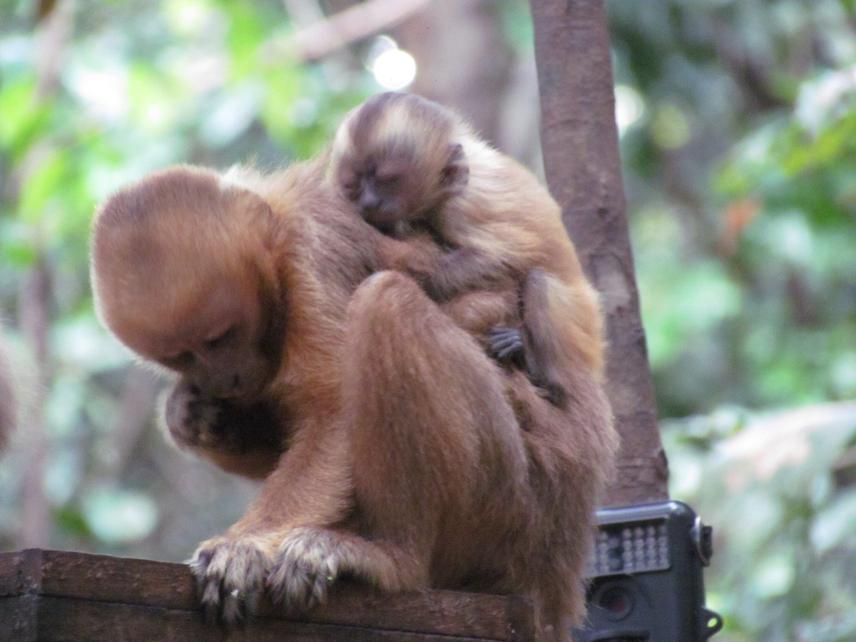Free eBook created from course materials.
Bruna Martins Bezerra
Other projects
12 Jul 2007
Social Ecology of Wild Golden Backed-Uacari in National Park of Jaú (PNJ), Amazônia, Brazil. A Contribution to the Management Plan of the PNJ
26 Jul 2010
In Situ Conservation of the Blond Capuchin, Cebus flavius, in Fragments of Atlantic Rain Forest in the Northeast of Brazil
8 Sep 2017
In Situ Conservation of the Blonde Capuchins: Predicting Potential Responses to Future Climate and Anthropogenic Disturbances
Since 2010, the blonde capuchin project has been dedicated to the conservation of Endangered blonde capuchins (Sapajus flavius). Our mission has focused on investigating the blonde capuchins and their habitats to understand their conservation needs.
This phase of our project will:
i) monitor the blonde capuchins through sound and camera trapping.
ii) investigate how anthropogenic noise may influence the species.
iii) build capacity in local teachers in public schools through environmental education workshops.
iv) raise conservation awareness in children in public schools.
v) understand locals’ perceptions of blonde capuchins to predict threats for the species.

Mother and infant with camera trap on the background. © Karolina Medeiros
We will be conducting our project in two Atlantic Forest fragments and one Caatinga forest fragment in Northeastern Brazil. One Atlantic Forest fragment is located at the municipality of Mataraca in the state of Paraíba (06°29,902’S – 034°29,704’W). It comprises an area of ~1186 ha of primary Atlantic Forest and secondary forest reforested in different periods due to recurrent mining activity in parts of the fragment occurring since 1989. We have been continuously monitoring the population of blonde capuchins at this site since 2010. The second Atlantic Forest fragment, locally known as 'Mata dos Macacos', is located at the municipality of Igarassú in Pernambuco (07°47.162’S – 035°00.788’W). It comprises an area of ~400 ha of primary and secondary forest surrounded by sugar cane plantations. We monitored this blonde capuchin population from 2010 to 2013. We will revisit this population to assess its current situation. The Caatinga Forest fragment is located at São José da Tapera, Alagoas, where we will conduct a pilot study to test our image and audio trapping techniques used in the Atlantic Forest. Local students are trained in the blonde capuchin project, producing relevant data for their dissertations and helping influence decision-makers in the conservation of blonde capuchins. By creating an interface between research and society, we hope to help with the conservation of blonde capuchins.